Before you study this topic; you are advice to study
Define Congruence / Congruent
Congruent Triangles
Corresponding Parts of Congruent Triangles
SAS rule of Congruence illustrates that, if two sides and one common angle to these two sides are equal to the two corresponding sides and one corresponding common angle of another triangle; then both the triangle are said to be congruent.
Example 1: In the following figure:
AC = XZ
BC = YZ
Is △ ABC ≅ △ XYZ
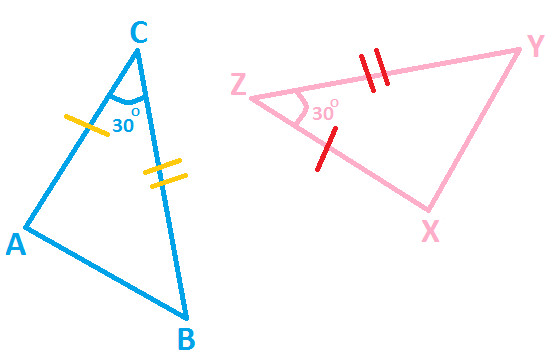
Solution: In the given figure:
AC = XZ (given)
BC = YZ (given)
∠ C = ∠ Z (30° each)
We can observe that:
Two sides AC & BC of △ ABC are equal to corresponding sides XZ & YZ of △ XYZ.
∠ C (common angle to sides AC & BC) of △ ABC is equal to corresponding ∠ Z (common angle to sides XZ & YZ) of △ XYZ
Therefore, from the above two observations, SAS congruence rules apply and we can say △ ABC and △ XYZ are congruent.
And the corresponding relationships are as:
A ↔ X
B ↔ Y
C ↔ Z
Hence, △ ABC ≅ △ XYZ
Example 2: In the following figure:
AC = XZ
BC = YZ
Is △ ABC ≅ △ XYZ
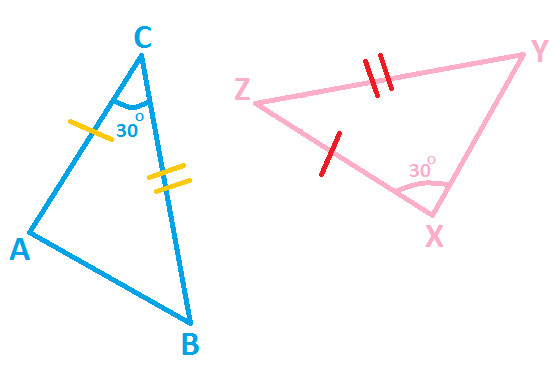
Solution: You can notice that example 1 and example 2 are almost same and difference is only of 30 angle in △ XYZ.
Let's see that the change of angle can leads to any change in the solution too.
In the given figure:
AC = XZ (given)
BC = YZ (given)
∠ C = ∠ X (30° each)
We can observe that:
Two sides AC & BC of △ ABC are equal to corresponding sides XZ & YZ of △ XYZ.
∠ C (common angle to sides AC & BC) of △ ABC is equal to ∠ X of △ XYZ
In the above 2nd observation, you can notice that ∠ X of △ XYZ is not the common angle to sides XZ & YZ.
Therefore, SAS congruence rule fails to apply here and we get:
Hence, △ ABC is not congruent to △ XYZ
Justification / Proof - SAS Congruency Rule
Now, let's justify or proof of SAS Rule of Congruence with the help of following three checks:
Check 1:
There is a given triangle XYZ and length of one of its side XY is equal to 5cm. You are asked to construct a triangle ABC congruent to triangle XYZ.
Can you do that ??
With length of one side given i.e. 5cm, following three types of triangles can be formed:
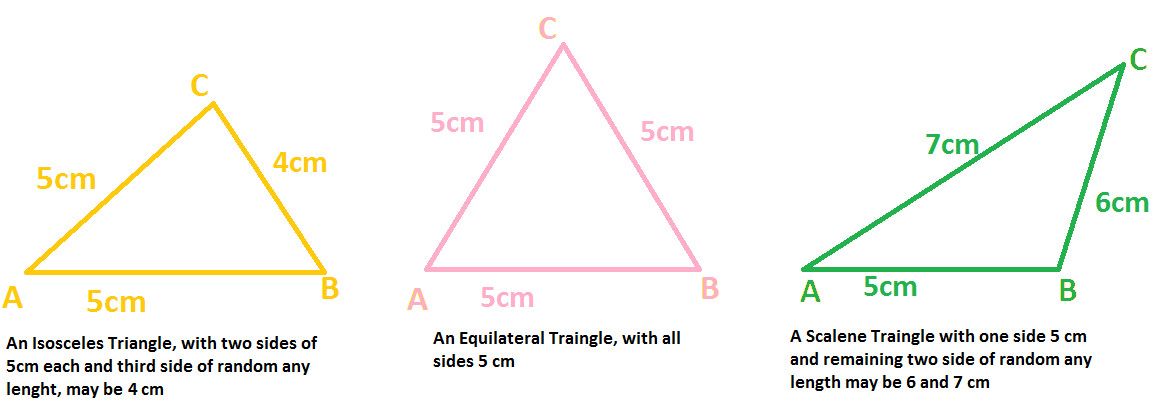
From the above diagram of three triangles, you can observe that given triangle XYZ can be any of the following and we are not sure which diagram of Triangle ABC is congruent to Triangle XYZ.
Hence, this confirms that two triangles cannot be congruent, if one side of a triangle is equal to the corresponding side of another triangle.
Check 2:
There is a given triangle XYZ , XY = 5cm & ∠ X = 45
Can you construct a triangle ABC congruent to triangle XYZ ?
With length of one side 5cm & measure of one angle 45°, we can construct many triangles:
(for instance)

From the above diagram of different triangles, you can observe that given triangle XYZ can be any of the following and we are not sure which diagram of Triangle ABC is congruent to Triangle XYZ.
Hence, this confirms that two triangles cannot be congruent, if one sides and one angle of a triangle are equal to the two corresponding sides and one corresponding angle of another triangle.
Check 3:
There is a given triangle XYZ , where XY = 5 cm, ∠ X = 45° & XZ = 6 cm
Can you construct a triangle ABC congruent to triangle XYZ ?
Let's try to construct a triangle ABC congruent to triangle XYZ, when length of two sides and measure of one common angle of the given two sides are given.
Steps of construction are as follows:
Step 1: Draw a line segment AB with length 5 cm, as shown in the below diagram:

Step 2: With the help of protractor and with A as center draw an angle of 45 and extend its arc to any convenient length, as shown below:
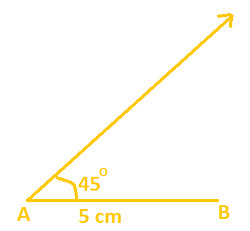
Step 3: Now with compass 6 cm wide opened and with A as center; draw an arc of which cuts arm of ∠ A, as shown below:
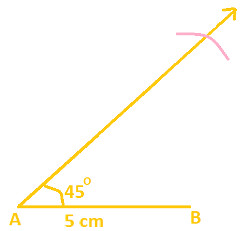
Step 4: Mark the point, at which arc cuts arm of ∠ A, as C; as shown below:
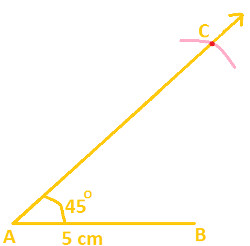
Step 5: Now, join points B and C, as shown below:
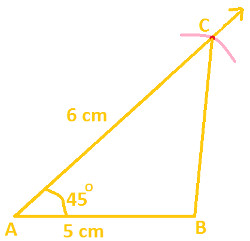
Therefore resultant figure is a △ ABC with:
AB = 5 cm
AC = 6 cm
∠ A = 45°
(see the above complete figure)
Now you can see that:
AB ↔ XY
BC ↔ YZ
∠ A ↔ ∠ X
So, on the basis above correspondence we get:
△ ABC ≅ △ XYZ
Hence, this proves SAS rule of Congruence which says:
If two sides and one common angle to these two sides are equal to the two corresponding sides and one corresponding common angle of another triangle; then both the triangle are said to be congruent .
Study More Solved Questions / Examples
Below are the measurements of few parts of two triangles in different conditions, check and explain which condition satisfies the SAS congruence rule. Also, write the congruency into symbolic form:
| Triangle PQR | | Triangle XYZ |
|---|
| 1) | PQ = 9.1 cm, PR = 6.6 cm, ∠ P = 70° | | ZX = 6.6 cm, YZ = 7.8 cm, ∠ X = 70° |
|---|
| 2) | PR = 6.6 cm, QR = 7.8 cm, ∠ Q = 60° | | ZX = 6.6 cm, YZ = 7.8 cm, ∠ Z = 50° |
|---|
| 3) | PQ = 9.1 cm, QR = 7.8 cm, ∠ Q = 60° | | XY = 9.1 cm, YZ = 7.8 cm, ∠ Z = 60° |
|---|
| 4) | RP = 6.6 cm, QP = 9.1 cm, ∠ P = 70° | | XZ = 6.6 cm, XY = 9.1 cm, ∠ X = 70° |
|---|
|
In the following diagram:
CO is a median to BA
∠ 1 = ∠ 2
Prove △ AOC ≅ △ BOC
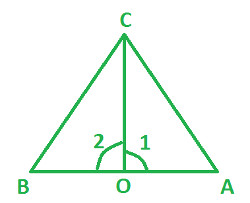 |
DO = BO
AO = CO
Prove △ BOC ≅ △ DOA
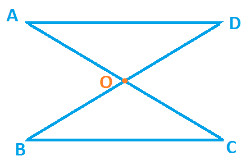 |
| | |






